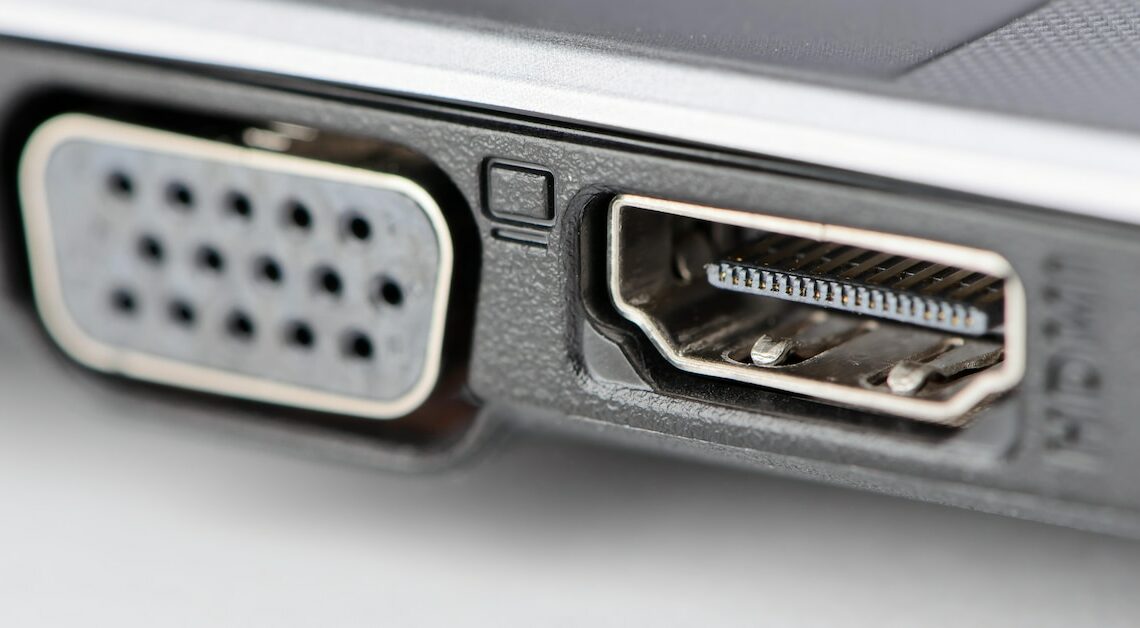
HDMI vs Displayport – these are different interfaces that have their own advantages and disadvantages for the user.
HDMI vs Displayport: Two digital transmission protocols at a glance
Both HDMI and DisplayPort are interfaces for transmitting audio and video signals. The transmission takes place between different devices, for example between a PC and a monitor or a receiver and a television.
- Both standards are used to transmit digital video and audio signals. In addition, the connectors for both standards are developed by the same companies. HDMI and DisplayPort are quite similar, but still have significant differences.
- It starts with the resolution. HDMI 2.1 has a resolution of 8K. The latest standard Displayport 2.1, however, also supports 10K and 16K.
- The frequency plays an important role when it comes to the speed of the image signal transmission. HDMI 2.0 cables can theoretically achieve up to 144 Hz, but this is often not possible due to restrictions on the manufacturer's side. DisplayPort transmits the data at up to 240 Hz or even more. This is particularly beneficial for data-intensive applications such as gaming. Such frequencies are not necessary for normal office applications.
- There are hardly any differences in bandwidth. For Displayport, this is over 80 GBit/s. HDMI also allows up to 80 GBit/s.
- There are more significant differences in color depth. While HDMI can provide 48 bits per pixel, the DisplayPort standard offers significantly less at 30 bits per pixel. If your work on the PC, for example, has something to do with color representation, it is advisable to use HDMI.
HDMI vs Displayport: Advantages and disadvantages at a glance
Another advantage of HDMI cables is that they can be combined with Ethernet. This means that when you turn on a device, all other devices connected via HDMI also turn on. This is useful when you connect the game console to the TV, for example. This means you don't have to turn on both devices individually.
- Advantages of HDMI: The standard supports Audio Return Channel (ARC) and Ethernet. HDMI CEC can also be used to transmit HDMI control commands between different devices.
- Disadvantages of HDMI: It is not possible to connect multiple monitors in series. For this, each individual monitor must have a direct connection to the computer.
- Advantages of Displayport: The standard supports daisy chains to connect multiple monitors in series. DisplayPort is also compatible with other connection types such as USB Type-C and VGA. Monitors with VGA or USB Type-C can also be connected to graphics cards via an adapter. A DisplayPort connection is always significantly cheaper than an HDMI cable.
- Disadvantages of Displayport: Ethernet data transfer is not possible. ARC is also not supported.
- An HDMI port can now be found in almost every PC and monitor. If you have a modern graphics card, it will usually have both an HDMI and a DisplayPort port. The latter enables even better transmission of image and sound, especially for gaming PCs.
- Conclusion: Both standards offer many advantages as well as some disadvantages. HDMI is completely sufficient for everyday use. If your job or hobby requires special requirements, for example in terms of frame rate, you should go for DisplayPort.
Also interesting:
- What is HDMI? Simply explained
- Extending HDMI cables – what you need to consider
- HDMI versions: How to tell the difference
